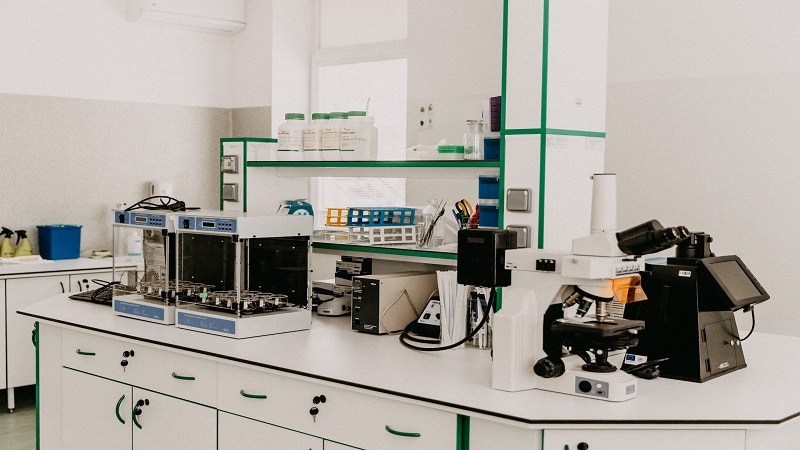
Research and Development (R&D) acts as the pioneering front of any progressive company. It seeks to innovate, improve, and optimize.
As industries grow and change, an organization should sharpen its R&D efforts. In turn, this can help a business remain current, relevant, and competitive. To help your company remain at the cutting edge, here are 7 strategies to refine and bolster your R&D initiatives.
1. Investing In Continuous Learning

Companies that understand the value of continuous learning often find themselves leading their industries. It's therefore important to attend regular workshops that are tailored to the latest industry needs. Employees should take specialized courses that offer advanced knowledge. They should also participate in global conferences. They can provide exposure to global best practices and breakthroughs.
It's also beneficial to encourage your team to seek knowledge outside their primary area of expertise. This may lead to the development of interdisciplinary solutions. These can often provide innovative approaches to long-standing challenges.
2. Leveraging External Specialists
An internal R&D team will be deeply familiar with a company's ethos and objectives. However, it might sometimes be too close to a problem to view it from a fresh perspective. External specialists come in the form of consultants, academic researchers, and niche experts. In turn, they come with a breadth of experience across various industries and projects.
Collaborating with them can lead to novel solutions, and can fast-track problem-solving. Beyond hiring these specialists, companies should create long-term partnerships or alliances with research-focused institutions. They can offer a steady stream of fresh insights and expertise that steer your business forward.
You can learn more about the specialists that could help you by visiting their websites. The people who research Venogen Biochemicals confirm folks' desire to access seasoned biochemists with years of CRO, CDMO, and analytical chemistry experience. They want help to expedite scientific breakthroughs that are inspired by universities and biotechnology companies.
3. Adopting The Latest Technology

Today's world sees technological leaps almost daily. For an R&D department, working with outdated tools or old methodologies can be a significant setback. They need to be able to harness the power of AI for predictive analysis. They may also need to use the latest in 3D printing for prototype development. It's modern tools such as these that have totally redefined the R&D landscape.
It's not about buying the latest equipment just for the sake of it. Instead, it's essential to understand how it could enhance your company. Once purchased, you need to ensure that your team is fully trained. In turn, they'll be able to use these tools to their fullest potential and reap the maximum benefit.
4. Fostering A Collaborative Environment
R&D is often seen as the secluded, cerebral wing of a company. However, some of the most groundbreaking innovations come from cross-functional collaborations. Imagine an R&D team regularly interacting with the marketing department, gaining insights into consumer needs.
Alternatively, they may speak to the production team to discover the practical challenges of manufacturing. Such collaborations ensure that R&D efforts are grounded in real-world needs and feasibility. As a result, this leads to products and solutions that are both innovative and practical.
5. Encouraging Creative Freedom
Every monumental invention in history came from thinking outside the box. It's true that it's essential to have processes and guidelines. However, companies must also create spaces for free thought and exploration within their R&D departments.
This may involve dedicating a certain amount of time each week for the team to pursue passion projects. Alternatively, they could hold regular ideation sessions without any agenda. Such practices can lead to unexpected and revolutionary solutions.
6. Establishing Clear Objectives
While exploration is vital, R&D needs direction. The objectives set for R&D should not only align with the company's current goals but also its future vision. The team should regularly revisit these objectives, refining them based on evolving market needs.
This ensures that every team member understands their mission. It can make the difference between aimless experimentation and focused innovation.
7. Measuring, Analyzing, And Optimizing
The success of any strategy (including R&D) lies in its continuous evaluation. Robust performance metrics should be established that take into account both qualitative and quantitative outcomes. These metrics should be regularly reviewed to identify areas needing improvement.
Data-driven insights can help companies understand industry trends. Statistics and information can assist teams in evaluating the success of individual projects. This can also help with predicting future challenges. Regular feedback loops with team members can further refine processes. In turn, this ensures that the R&D department operates at peak efficiency.
Your company's Research and Development efforts need to be forward-thinking, efficient, and innovative. This requires a blend of strategy, culture, and resources. By honing in on these 7 areas, companies can keep pace with industry evolution. They can often be the ones driving change, as they herald growth and success.










